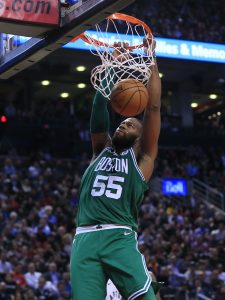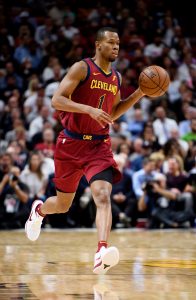As we detailed at length back in March, the NBA’s new Collective Bargaining Agreement made some changes to the trade rules related to non-guaranteed contracts.
Under the NBA’s old CBA, which was in effect through the 2016/17 season, a player’s full salary (not including unlikely incentives) was used for trade purposes, whether or not it was guaranteed. If a player had a $10MM salary with a partial guarantee of $1MM, his outgoing salary in a trade was the same as it would have been for a player who had a fully guaranteed $10MM contract.
[RELATED: Hoops Rumors Glossary: Traded Player Exception]
That’s no longer the case under the league’s new CBA, however. While contracts signed under the old agreement still operate by the old rules, contracts signed after July 1, 2017 are subject to the rules of the current CBA. And under the current CBA, only the guaranteed portion of a player’s contract counts for outgoing salary purposes in a trade, limiting the appeal of non-guaranteed salaries as trade chips.
In the example above, the player with a $10MM salary and a $1MM guarantee would now only count for $1MM for outgoing salary purposes in a trade, but the team acquiring him would still have to consider him a $10MM player.
These new rules have perhaps put a damper on the trade market for players on non-guaranteed contracts this offseason, but there have still been a handful of moves involving those players. Here’s a breakdown of this month’s trades that have featured a non-guaranteed salary, and how the new rules impacted each deal:
Bulls acquire Julyan Stone ($1,656,092 non-guaranteed salary) from Hornets in three-team trade
The Hornets also sent Timofey Mozgov to the Magic for Bismack Biyombo in this deal, and Mozgov’s salary was large enough to match Biyombo’s. As such, it didn’t matter from Charlotte’s perspective that Stone counted as $0 for outgoing salary purposes.
Stone’s inclusion in the trade allowed Chicago to acquire an incoming piece without taking on any guaranteed salary. If Stone hadn’t been a part of the deal, the Bulls would have to receive a draft pick or the NBA rights to a draft-and-stash player just to ensure that they were getting something in the deal. Chicago waived Stone shortly after acquiring him.
Thunder acquire Rodney Purvis ($1,378,242 non-guaranteed salary) from Magic
Purvis was swapped for Dakari Johnson in this deal and both players were on two-year minimum salary contracts. That meant that each team could acquire its incoming player using the minimum salary exception without having to worry about matching salaries.
Under the old rules, each club would have created a $1,378,242 traded player exception in the deal — that’s the amount of Purvis’ 2018/19 salary as well as Johnson’s. Under the new rules, however, only the Thunder could create such an exception, since Johnson’s salary was guaranteed. Purvis counted as $0 for Orlando’s outgoing salary purposes, so the Magic were unable to create a TPE as a result of the swap.
Thunder acquire Abdel Nader ($450,000 of $1,378,242 salary guaranteed) from the Celtics in exchange for Rodney Purvis ($1,378,242 non-guaranteed salary)
This is the most interesting deal of the three. Although Nader is technically earning the minimum salary, his deal runs longer than two years, meaning the Thunder couldn’t use the minimum salary exception to acquire him. They also couldn’t match salaries using Purvis, since he counted as a $0 outgoing salary.
So how did the Thunder acquire Nader? Using that traded player exception they’d just created in their deal with the Magic. Because Johnson and Nader had equal $1,378,242 salaries, Oklahoma City used up the entire trade exception just three days after it was created, making it the rare TPE to be used in full.
Meanwhile, the Celtics acquired Purvis using the minimum salary exception, but were only able to create a $450K trade exception for Nader — that’s the amount of his partial guarantee, so that was his outgoing-salary amount from Boston’s perspective.
Note: Richaun Holmes and Isaiah Whitehead, both on non-guaranteed contracts, were also involved in trades this month, but they were signed under the old CBA. As such, their contracts operated under the old rules.


